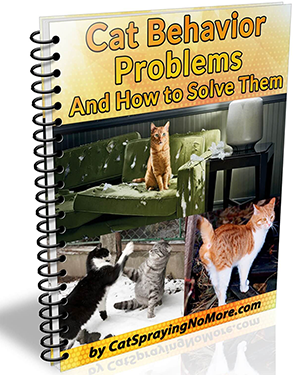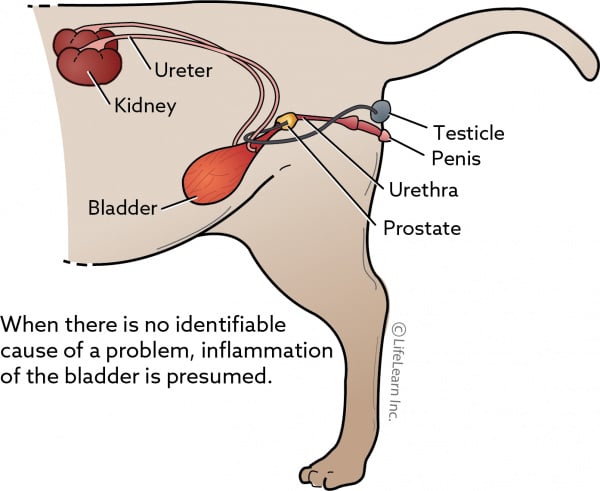
Daily Archives: May 17, 2023
Exploring the Fascinating World of Felines: A Review of “Cat Eye View” Video
“Cats Eye View” is a captivating video that provides a unique perspective into the world of felines. Produced by Futurism, a renowned platform for exploring emerging technologies, this immersive experience allows viewers to see the world through the eyes of cats. In this review, we will delve into the mesmerizing footage and discuss the highlights of this intriguing video.
Content and Presentation:
The “Cat Eye View” video offers an unparalleled opportunity to witness the world from a feline’s perspective. Through the use of specially designed cameras attached to the collars of various cats, viewers are taken on a remarkable journey filled with intriguing sights and sounds. The video seamlessly combines high-definition footage with informative narration, creating an immersive experience that educates and entertains.
The highlight of “Cat Eye View” is the immersive nature of the footage. From the moment the video starts, viewers are transported into the world of these curious creatures. The cameras capture the intricate details of the cats’ surroundings, showcasing their unique perspective on the world. Whether it’s exploring their territory, chasing after prey, or engaging in playful interactions, the video provides a fascinating glimpse into the life of a cat.
The narration accompanying the video is informative and engaging. It offers insights into feline behavior, explaining the reasons behind their actions and shedding light on their instincts. The information is presented in a clear and concise manner, making it accessible to both cat enthusiasts and those seeking to understand their pets better.
Visual and Audio Quality:
The visual quality of the “Cat Eye View” video is exceptional. The footage is crisp, with vibrant colors and sharp details. The use of multiple camera angles and perspectives adds depth and variety to the visuals, enhancing the overall viewing experience. From close-ups of the cats’ whiskers to panoramic shots of their surroundings, every frame is visually captivating.
The audio quality is equally impressive, with clear narration and well-balanced background sounds. The ambient sounds of the environment, such as birds chirping or leaves rustling, create an immersive atmosphere that adds to the authenticity of the experience. The audio and visual elements complement each other seamlessly, enhancing the overall impact of the video.
Educational Value and Entertainment :
In addition to its entertainment value, “Cat Eye View” provides educational insights into feline behavior and the world from their perspective. By showcasing how cats interact with their environment, the video offers a better understanding of their instincts and natural behaviors. Cat owners and enthusiasts can gain valuable knowledge from observing the cats’ hunting techniques, territorial markings, and social interactions.
Moreover, the video inspires a sense of empathy and appreciation for the unique experiences of our feline companions. It encourages viewers to view the world from a different vantage point and recognize the intricate details that shape a cat’s daily life.
Conclusion:
“Cats Eye View” is a captivating video that offers a fresh and fascinating perspective on the world of cats. Its immersive nature, informative narration, high-quality visuals, and educational value make it a must-watch for cat lovers and anyone curious about feline behavior. Prepare to be enchanted as you explore the world through a cat’s eyes.
I thought of doing this myself but my cat stays inside now a days. There is also an interesting video game named stray which is from the cat’s point of view. Also as the article stated people like watching cats on the internet. So very cute video.
Original article to read click here
Interstitial Cystitis May Be the Problem
Interstitial cystitis is one of most mysterious of feline diseases to manage and treat. Part of the problem lies in the fact that the symptoms of this illness can be so vague and broad that pinpointing the correct diagnosis can be difficult. The usual victims of interstitial cystitis are young male cats, although females can also suffer from this as well. Many cats who are afflicted with FIC usually outgrow it eventually.
Symptoms of Interstitial Cystitis
Diagnosis of interstitial cystitis is usually made on a basis of the symptoms that the cat is presenting. In most cases, there is no sign of infection, but your veterinarian will suspect interstitial cystitis if you cat is showing some of these symptoms:
- Straining when he tries to urinate.
- Urinating with great frequency, with sleep disturbed by the need to urinate.
- Blood will usually be present in the urine.
- The symptoms appear when the cat is subjected to stress.

Causes of Interstitial Cystitis
Research is still underway to understand exactly what causes interstitial cystitis in cats. No one theory of the cause of this condition has been absolutely agreed upon, but several lines of thought have been proposed. The nervous system appears to play a major role.
- The nerves that serve the bladder may have become inflamed. Some veterinarians believe that stress alone is responsible for this inflammation, while other think that an irritated bladder lining begins the cycle.
- The bladder is provided with a protective coating of mucus, which keeps the waste products filtered out by the kidneys from causing it to become irritated. If the mucus is somehow damaged, harm can be done to the bladder wall, causing inflammation.
- Stress is just as harmful to cats as it is to humans, and flare-ups of interstitial cystitis are often linked to a stressful situation, particularly with cats that remain indoors exclusively or in multi-cat households.
Treatment
Despite the severity of interstitial cystitis, it is one of the more difficult of urinary tract diseases to treat successfully. Antibiotics are generally useless in providing relief, although a bacterial infection should be ruled out to begin with.
Most veterinarians treat interstitial cystitis with anti-inflammatory drugs such as prednisone. These help to reduce inflammation. Anti-inflammatories are usually given in combination with pain relievers. Another approach, since stress appears to be a major factor, is to give the cat antidepressants and anti-anxiety medications. To help heal the bladder and make it less susceptible to damage, your vet may prescribe drugs that will help restore and strengthen the mucus coating.
You can help to prevent a recurrence of interstitial cystitis by feeding the cat canned food and making sure that he or she drinks plenty of water. Making the home more relaxed and providing toys and attention can also help to keep your cat free of FIC
More about Feline Idiopathic Cystitis

Feline Idiopathic Cystitis By Tammy Hunter, DVM; Malcolm Weir, DVM, MSc, MPH; Ernest Ward, DVM
Cat Behavior Demystified: Understanding Feline Body Language and Communicating with Confidence
Cats have long captivated our hearts with their mysterious and independent nature. However, understanding their behavior and body language can be a challenge for many cat owners. By unraveling the secrets of feline communication, we can build a stronger bond with our furry companions and ensure their well-being. In this article, we will demystify cat behavior, shedding light on their body language and providing you with the tools to communicate with confidence. From tail movements to vocalizations, let’s delve into the fascinating world of cat behavior and decode the messages our feline friends are trying to convey.
Feline Body Language
Cats are masters of nonverbal communication, using their bodies to convey a range of emotions and intentions. Understanding feline body language is crucial for cat owners and enthusiasts to ensure the well-being and strengthen the bond with their furry friends. Here are some key aspects of feline body language to help decode their silent messages.
Understanding feline body language takes time, observation, and patience. By paying attention to their tails, ears, eyes, body posture, and grooming habits, we can better comprehend our cats’ emotions and respond appropriately. This knowledge enables us to create a safe and nurturing environment for our feline friends, strengthening the bond and promoting their overall well-being.
- The Tail’s Tale:
A cat’s tail is a window into their emotions and intentions. Pay attention to its position and movements. A relaxed tail held straight up or with a slight curve indicates a content and confident cat. A puffed-up tail suggests fear or aggression, while a tucked tail signifies anxiety or submission. A flicking or twitching tail can indicate excitement or irritation. By observing their tail, you can better gauge your cat’s mood and respond accordingly, creating a calm and harmonious environment for them. - Ears: The Feline Mood Indicator: Cats use their ears to communicate a range of emotions. Forward-facing ears with a relaxed posture signify curiosity or friendliness. However, flattened or backward-facing ears indicate fear, aggression, or stress. Twitching ears can suggest alertness or irritation. By observing your cat’s ears, you can gauge their emotional state and adjust your interactions accordingly. If your cat’s ears are flattened or pulled back, it’s best to give them some space and reassess the situation to avoid any potential conflicts or discomfort.

Get Cat Language Bible
- The Language of Purring: Purring is a hallmark of feline communication, often associated with contentment and relaxation. However, cats can purr in various situations, including when they are anxious or in pain. Understanding the context is crucial. A relaxed cat with closed eyes and a gentle purr typically signals happiness and comfort. If your cat is purring excessively or in combination with other signs of distress, it may be a signal that something is amiss. In such cases, provide a calm and secure environment or consult a veterinarian to address any underlying health issues.
- Meows and Vocalizations: Cats have a repertoire of vocalizations to express their needs and desires. Each meow carries a unique meaning, ranging from a gentle greeting to a demanding plea. Pay attention to the pitch, tone, and intensity of your cat’s meows. A high-pitched, short meow may indicate excitement or a request for attention, while a low-pitched, prolonged meow may signal discomfort or hunger. By listening to their vocalizations and observing their body language, you can better understand what your cat is trying to communicate and respond accordingly.

Get Cat Language Bible
- Eyes: The Window to the Soul: A cat’s eyes can convey a wealth of information. Wide-open, relaxed eyes indicate a comfortable and friendly cat. Dilated pupils often indicate excitement, fear, or aggression. Half-closed eyes can signify contentment and trust. Blinking slowly at your cat is a sign of affection and can help build trust and rapport. However, staring directly into a cat’s eyes without blinking can be interpreted as a threat. Respect your cat’s personal space and avoid prolonged direct eye contact, especially with unfamiliar cats, to prevent any potential confrontations.
- Body Posture and Gestures: Cats communicate through their entire body, not just their tail and ears. A relaxed and open posture, with a straight back and no arched or fluffed-up fur, indicates comfort and confidence. Conversely, a hunched or arched back can signal fear or aggression. Watch for other gestures such as kneading, stretching, or rolling over, which often indicate contentment and trust. Understanding your cat’s body language and responding appropriately will foster a deeper connection and allow for better interaction and mutual understanding.
Conclusion: Decoding cat behavior and understanding their body language is an essential skill for every cat owner. By observing and interpreting their tail movements, ear positions, vocalizations, eye expressions, and body postures, we can better understand our feline companions and communicate with confidence. Building a strong bond based on trust and understanding will create a harmonious environment for both you and your cat. Remember to be patient, observant, and responsive to your cat’s cues, and with time, you’ll become fluent in the subtle language of cats, enhancing your relationship and enriching both of your lives.
More articles on cat behavior check out this interesting article on why cats meow in the morning link
